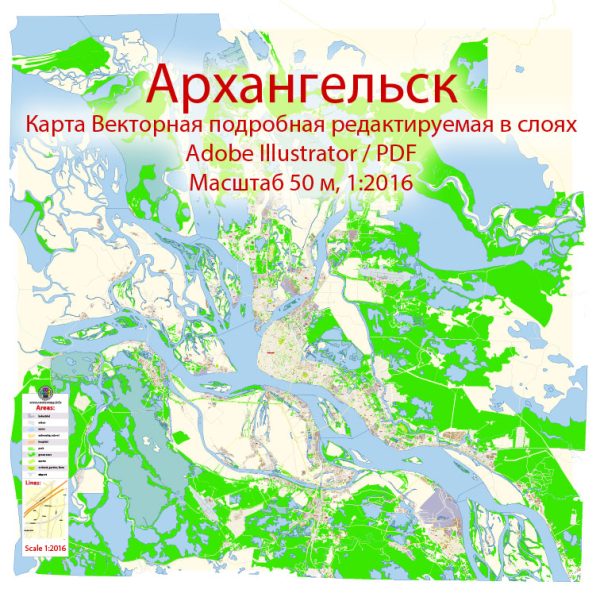The history of urban development in Arkhangelsk, Russia, is a fascinating journey that reflects the region’s historical, cultural, and economic evolution. Here is a brief overview of the key phases in the city’s urban development:
- Early Settlements (12th-13th centuries): The area around Arkhangelsk was originally inhabited by the indigenous Pomors, who were known for their seafaring and fishing skills. The first recorded settlement in the area dates back to the 12th century, making it one of the oldest in the Russian North.
- Foundation as a Seaport (1584): The modern history of Arkhangelsk begins with its official founding in 1584 by Tsar Ivan the Terrible. It was established as a seaport on the Northern Dvina River, primarily to facilitate trade and communication with European nations, particularly England and the Netherlands. The city’s name, “Arkhangelsk,” means “Archangel” in Russian, and it was named after the Archangel Michael Monastery.
- Growth as a Trading Hub (17th-18th centuries): Throughout the 17th and 18th centuries, Arkhangelsk continued to develop as a major trading and commercial center. The city’s port played a crucial role in the export of Russian goods, such as timber, furs, and later, grain, to Western Europe.
- Development of Wooden Architecture: The architecture of Arkhangelsk during this period was predominantly wooden, characterized by charming, traditional buildings with intricate carvings. These wooden structures were constructed in the traditional Russian style and were essential to the city’s character.
- Industrialization and Modernization (19th-20th centuries): The 19th century saw Arkhangelsk gradually industrialize, with the growth of industries such as shipbuilding and timber processing. The city’s port remained a vital economic link between Russia and the West. Additionally, the city expanded with the construction of new, more substantial buildings, although wooden architecture remained a significant part of the urban landscape.
- Soviet Era and World War II: Arkhangelsk played a crucial role during World War II as one of the key ports used by the Allies to supply the Soviet Union with materials under the Lend-Lease program. The city faced heavy bombing during the war but was subsequently rebuilt.
- Post-Soviet Era: After the collapse of the Soviet Union in 1991, Arkhangelsk, like many other Russian cities, went through a period of economic and social transition. It has since continued to develop as a regional administrative and economic center, serving as the capital of the Arkhangelsk Oblast.
Today, Arkhangelsk stands as a unique blend of its historical heritage and contemporary urban development. Its architecture is a mix of old wooden buildings, Soviet-era structures, and modern buildings. The city remains an important hub for maritime transport and continues to play a role in Russia’s northern economic and cultural life. Its history and location on the White Sea make it a distinctive destination for those interested in Russia’s northern heritage and Arctic development.


 Author: Kirill Shrayber, Ph.D.
Author: Kirill Shrayber, Ph.D.